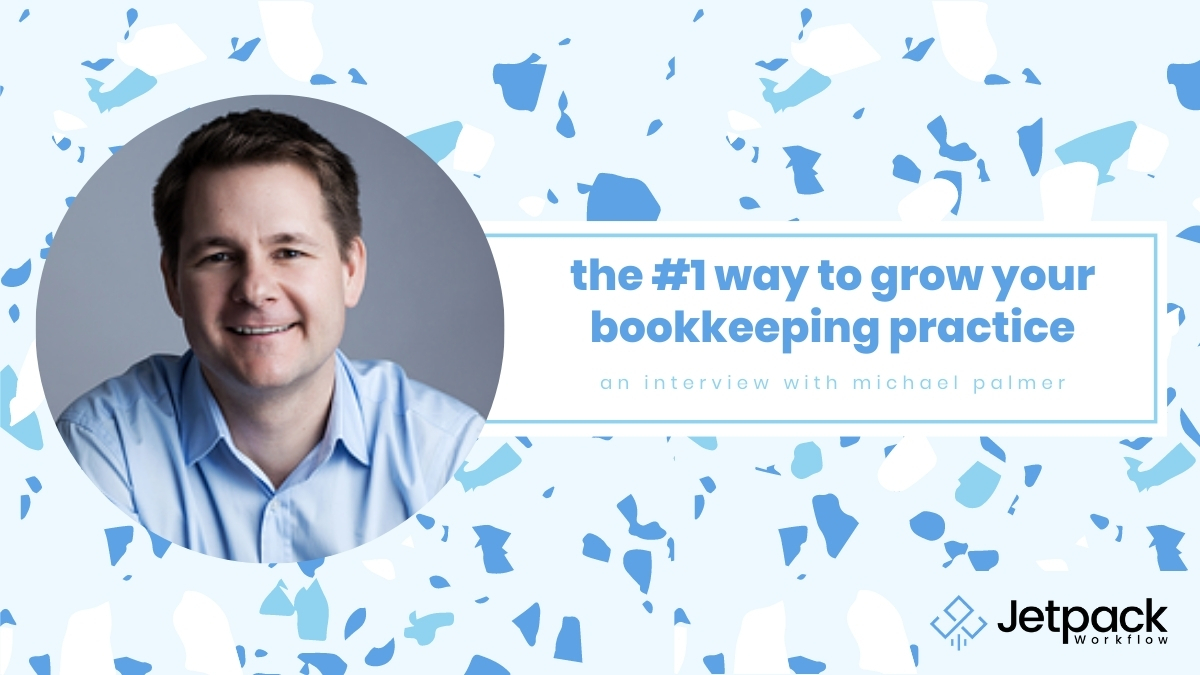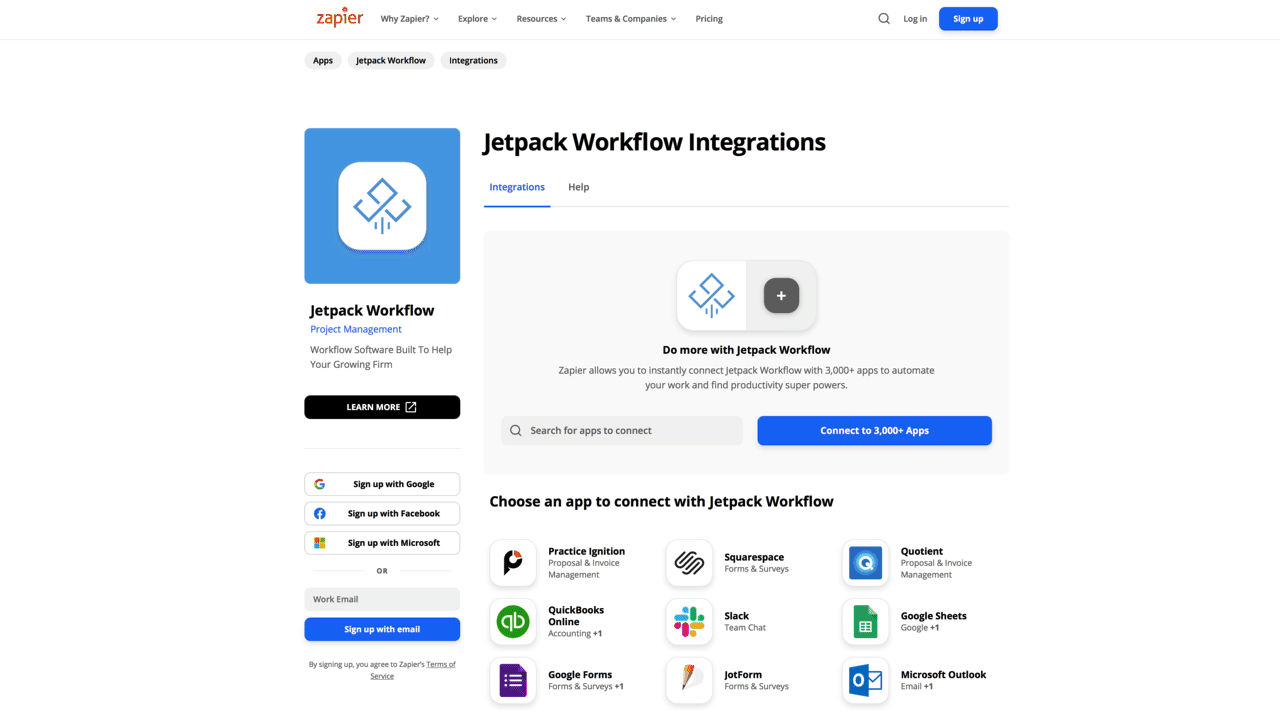Automate Your Team’s Work in 5 Steps and Run the Accounting Firm of Your Dreams

Work about work happens when paid employees spend valuable time recording their work completed, tracking status updates, and managing multiple projects in different platforms, software tools, or even email addresses. Help your team by taking the work about work insanity and kicking it to the curb.
Your team can do better work. You can be the CEO of a thriving accounting firm you’ve always imagined. You just need to give them the tools they need most.
Why Workflow Automation Helps Your Firm Work Smarter, Not Harder
Poor communication on work tasks costs US businesses with fewer than 100 employees $420,000 every year. Workflow automation is the design and combination of human and system-led tasks routed based on specific, pre-defined business rules.
Before you introduce your team to a workflow automation platform or multiple workflow automation tools, you’ll want to understand the basic principles behind automating workstreams to improve productivity and grow your business.
What is Workflow Automation?
Workflow automation is led by rules. Across all departments, these automations can save precious time to be used on strategic initiatives, rather than data entry, sending emails, ticket assignments, etc. If you think about your normal workday, chances are that much of it, if not most, is taken up by menial, tedious tasks. Implementing workflow automation minimizes the human touchpoints in a process, leading to a more efficient project management and better use of employee time.
Why is Workflow Automation Software Necessary for Accounting Firm Owners?
Accounting is an industry where workflow automation can have a huge impact. Imagine your whole process for a specific task with minimal human touch. Not only does this save time for employees and your firm, but it also increases accuracy and effectiveness. Human error is inevitable and by minimizing the amount of times an employee has to manually complete a task, you’re able to minimize human error overall.
Of course, workflow automation isn’t meant to eliminate human impact completely, it’s simply meant to allow employees to dedicate more time to high-level, high-value work. In fact, by giving employees the right tools, training, and support, you’re helping them to feel more comfortable at work, a top reason why employees leave companies. Basically, workflow automation gives employees the ability to actually think and use their brain in a strategic way rather than completing work about work.
More brain power equals more company activity equals more income for your firm. And fewer manual processes and workarounds mean scalability and growth opportunities for your firm overall.
Automate or Delegate: Find Areas to Save Manual Tasks, Make Room for Strategic Work
Not every task can be automated, and that’s important to remember when implementing a workflow automation system. The best thing to do is to think about your (and your employees’) day-to-day work and the tasks that could potentially be eliminated from your day or from a human’s day completely.
Workflow Automation Examples
Some tasks can be automated almost 100 percent, and those are the ones that will save your whole team the most time. Rather than inputting tons of data manually or scheduling 10 meetings, maybe a simple approval at the end is all you’ll need to do.
Some examples of tasks that can be automated are:
- Recurring meeting scheduling
- Invoice payments
- Payroll
- Product reorder
- Project management (task completion notifications)
- Onboarding new clients
- Onboarding new employees
Learning to Delegate to Your Team Examples
If all tasks can’t be completely automated, that’s normal! An important skill of any leader is knowing how to effectively manage and delegate manual tasks, no matter what size. Always keep in mind your team’s abilities and strengths when dividing work, as well as planning for employee capacity and workloads.
Some examples of tasks that can be delegated to others (not automated) are:
- Research competitors’ marketing strategies
- Interact and engage with people and other companies on social media on behalf of your firm
- Manage workload and assignments of lower-level employees, staff, and contractors
- Track expenses for year-end tax write-offs and consolidate across platforms (Venmo, PayPal, Stripe, Quickbooks, etc.)
- Managing strategic clients’ work and communications
How to Implement Workflow Automation Software in 5 Simple Steps
Step 1. Analyze Your Schedule
Take a look at your team’s day-to-day and see where most time is spent. Sending out a survey or holding a meeting to discuss may be beneficial to finding the true usage of time within your firm. If you realize that two hours a day is spent on communicating with team members that it’s their turn to work on a task or managing project status, automation may be perfect for you. Maybe most of your time is spent on high-level strategy-based projects where automation may not fit, either way, it’s important to know what you’re spending your time doing. You can save an hour a day (or more) by automating some of the simplest of tasks.
Step 2. Decide Which Tasks Can Be Eliminated
This step doesn’t necessarily need to only happen during a workflow automation process; you could do it right now. After seeing what you spend your time on, are there some things you do that are simply unnecessary? Check-in meetings that turn into a casual conversation each week, email updates that just get sent to trash, or repetitive tasks that summarize something already done are all potentially unnecessary at all in your day. Whether it can be automated or not, there’s no reason to spend time on something that doesn’t bring value to your team or your clients.
Step 3. Determine What Can Be Automated
This is where the real automation process begins. Go through your weekly, monthly, or quarterly tasks and see what you really need to have a hand in. If something can be a recurring bill or subscription, or data can be entered automatically (even if you don’t know how at the moment), put it on the automation list. Once you realize how much can be done without your personal input, you’ll start to see how much time can be saved going forward and how incredibly talented you and your team really are together.
Step 4. Research Your Options
Implementing a workflow automation platform is a pretty big step, much like hiring your first employee. Take the time to not only shop for the ideal software for your team’s unique skills, but also reserve time on your schedule to understand the tool’s value, train yourself and your employees, and build smart processes around the technology to realize as much benefit for you and your company as possible.
Step 5. Be Understanding and Flexible
Getting used to any new process or software can be difficult, and workflow automation is no different. In fact, it’s much bigger than a new email platform or CRM, because it touches aspects of your work at multiple points per day.
Understand that you may need to tweak processes here and there, and be cognizant that everything is working correctly for the first month or so. After this, you’ll likely get the hang of things after you work out the initial hiccups.
Workflow Automation Made Simple with a Workflow Software
Taking on a new tool sounds scary, we know. And when you’re the boss, it can be difficult to take the leap when you’re unsure. But there are some areas that really do need all that technology to make work easier and simpler. Growing your firm at each step has been uncomfortable, so why should automating your team’s work be any different?
Try Jetpack Workflow free for 14 days, and equip your talented team with the tools they need to do stellar, efficient work for you and your clients. We’re in the business of workflow automation, so you can focus on yours.





















